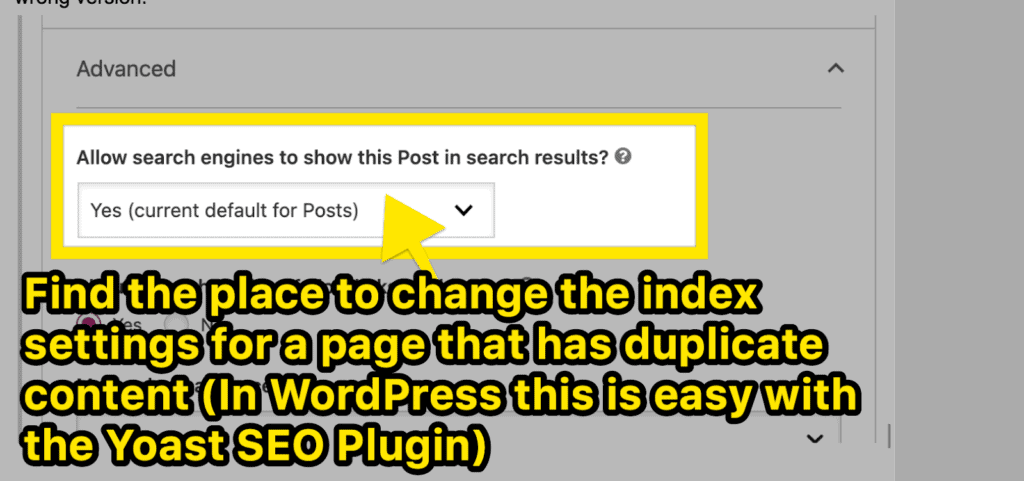The importance of avoiding duplicate content

If you’re trying to learn more about SEO for your small school’s website, you’ve probably heard of duplicate content. There’s a lot of mixed information out there about duplicate content, ranging from what duplicate content actually is, how you can be penalized for it, and whether or not it actually hurts your SEO. In this blog post, we’ll dig into what duplicate content really means, and why you should be avoiding it when building your school’s website out.
What is duplicate content?
Duplicate content is content from your site that is exactly the same from one webpage to another. This means that every page on your site has the same images or text boxes, or all of your blog posts are exactly the same. Since the content is on a specific page with a specific URL, having the exact same content show up on another URL address means you have duplicate content on your site.
Duplicating content isn’t always intentional or malicious. Most may not even notice certain pieces of content are the same across their website. For example, for someone who is not a web designer, it may not be second nature for them to understand you can’t repeat the same image several times across a website. Popular non-malicious occurrences of duplicate content are only publishing printer-version only web content, multiple URL variations, or even having a discussion board that has the same content because there are both mobile and desktop versions.
Now, there is certain content that can be repeated because it’s in such a small amount, like contact emails, telephone numbers, social media links, and other contact forms. Content that will be flagged by Google for being a duplicate includes blog posts, articles, images, text headers, meta description, etc. It’s advised to avoid duplicating this type of content.
How does duplicate content impact SEO?
A common misconception about duplicate content is that it can get you more “hits” in Google searches, as all of your content is the same so certain keywords will be flagged for your entire website. In fact, duplicate content can harm your website and SEO rankings. When Google crawls the content of your site and reports that a high percentage of the content is repeated on every page, the search engine gets confused about which content to rank.
Duplicated content also can actually impact user experience because a user may get confused when browsing through your website and notices the same content over and over. Duplicate content may have placed you higher in the search engine rankings somehow, but your audiences won’t be pleased with what they see since it’s all the same.
Duplicate content doesn’t make it easy for search engines either. The largest problems search engines face with duplicate content are:
- Search engines don’t know which pages of the website to include and exclude in their indices
- Search engines don’t know which pages to rank for search query results
- Search engines don’t know how to direct the link metrics to one page, or know if they need to keep it separated between multiple versions of the site
Overall, if you have a lot of duplicate content on your site, the wrong web pages may be getting ranked over the correct ones, and the pages you want to to show up in search results may not show up at all because the wrong versions of your site are being indexed over the correct ones.
Ways to avoid duplicate content
There are ways to check your school’s website for duplicate content, and ways to help you avoid duplicate content altogether. Duplicate content checkers like CopyScape and DupliChecker will scan your website’s content for any duplicated information before and after it’s been published to make sure nothing is exactly the same, or similar enough to cause problems. CopyScape will also scan the web to double check other sites aren’t plagiarizing your website content, either. These websites will check over your content to ensure it’s original in comparison to the rest of your website’s content.
Other ways to avoid or minimize duplicate content on your website are:
- Minimize overall duplicate content: This is a no-brainer. If you realize you have a few web pages on your school’s website that are too similar, consider expanding a page or two or doing some consolidation work to minimize the amount of similar content.
- Learn your content management system: It’s important that you know how content is organized and stored on your website. For example, blogs may be archived in multiple versions in different places on your website, as in they could be copied to both the homepage as well as your blog page.
- Decrease boilerplate repetition: As stated above, listing out contact information, social media handles, or your school’s slogan won’t hurt your SEO since that information takes up such a small percentage of your website; however, long chunks of text repeated on every page is redundant and can definitely be minimized.
- Don’t publish “stubs”: Stubs are empty pages of content used as placeholders for possible future content. Users aren’t going to like browsing your site and finding empty pages, so don’t publish any pages on your site unless they have the original content already built out. Having stubs on your website makes it hard for Google to decide if it needs to be indexed or not, so if you have placeholder pages, make sure you tag them “noindex” so Google won’t index them. Indexing is Google’s way of filtering content and deciding which pages have distinct information that needs to be ranked. If there are two versions of a page, for example your Home Page and a Landing Page used for ad campaigns, and the landing page is not tagged “noindex” then Google could index the wrong version. Inset

Want to learn more?
Join us on April 29 from 1-2PM ET for the first FREE Lunch and Learn in our new WordPress Website Workshop monthly series. This month’s workshop topic is all about SEO! Sign up today!